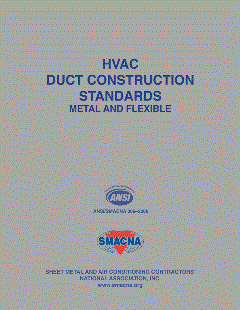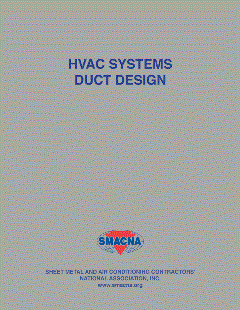Throughout history, revolutions have started for many reasons. Most often, the main reason is dissatisfaction with current conditions and a desire to see things change.
The industrial revolution in our country started this way. It brought about substantial changes and made millionaires out of people with eighth-grade educations. Many of the modern conveniences we take for granted today came from their ingenuity and a desire for something better.
The HVAC industry falls into this category — we are at a crossroads. For decades, many company business models have remained the same. Run service calls one after the other, and fix or replace the equipment. This often results in companies barely surviving and a bleak outlook on the future.
How long can we endure this cycle? Let’s look at some issues that have our industry primed for a revolution and how you might use this as an opportunity to make the next great change in HVAC.
SMART EQUIPMENT, NOT SO SMART INSTALLATIONS
HVAC equipment has rapidly advanced and become sleeker, smarter, and more efficient — but system installation hasn’t followed suit. Instead, duct installations seem to be going the other way. Please understand that equipment is not the system. It’s just a component of the system. A duct system that doesn’t deliver the equipment’s rated capacity into the building will fail to operate as designed, no matter how smart it is. Use this knowledge as a foundation for your revolution.
Duct systems remain in the Stone Age due to outdated duct sizing rules of thumb, sizing equipment by building square footage, placing ducts in attics and crawlspaces, and poor duct installation practices. These practices keep HVAC professionals from doing their best and, in many cases, unintentionally creating not-so-smart installations.
One step in the right direction is to transition to smart design tools. Use them to select properly sized equipment to attach to right-sized ducts. Make sure they are installed in smart locations where they don’t gain or lose a tremendous amount of heat. Install the ducts using proper installation practices, and then test and verify your work to ensure everything operates as designed.
Now, combine an awesome duct system with smart HVAC technology for the best of both worlds. The contractors, manufacturers, and industry leaders that first recognize this need for system unity and act accordingly will lead the revolution that determines how well-installed HVAC systems perform.
THE BUILDING INFLUENCE
Smart HVAC system designs and installations account for the building functioning as a duct system extension. You might be able to control your thermostat with a voice command or smartphone, but if your house is still uncomfortable, fundamental building design and installation practices were missed.
It’s time for HVAC professionals to stop taking the blame and suffering the consequences of poor construction techniques. When insulation is poorly installed, or a building has excessive air leakage, HVAC professionals get the blame.
No homeowner ever said, “I’m uncomfortable, I’ll call the insulator or home builder.”
We’ve grown accustomed to oversizing equipment capacity to account for the low-priced HVAC systems that many builders push for. There is more emphasis on cabinets and carpet than comfort and how well the system performs. It’s time to help our customers understand how the building impacts an HVAC system’s ability to maintain comfort.
We need to stop addressing just one aspect of comfort and look at the complete picture. This opens the door to other opportunities regarding occupant safety and health. There is more to correcting these issues than installing a CO alarm and a high-efficiency air filter.
Imagine a complete HVAC approach that helps customers want to buy efficient and safe home comfort. The HVAC professionals who understand how to account for and measure the factors that influence the health, safety, comfort, and efficiency of their systems will lead the next HVAC revolution.
A CODE REVOLUTION
Most of us can agree that our industry needs codes. While they are necessary, they must be kept in context. Contractors who do the right thing and install systems they would have in their own homes often don’t need codes because their installations exceed them. Codes are needed to ensure the guys who don’t have integrity and do as little as they can to get by are kept in line.
Our industry hasn’t been policing ourselves very well, and the code changes over the past decade reflect this. They are more restrictive and unrealistic for many homes across the country. Because of this, many contractors bypass them, since they feel it isn’t worth the hassle. It doesn’t have to be that way.
One thing is certain when it comes to codes: Change is inevitable. Imagine if codes evolved to focus on live field measurements and true verification instead of a “check the box” approach designed to simulate performance. Today, customers expect and deserve more from their HVAC systems. A measurement and verification approach could serve as an insurance policy for you and them. Would customers be willing to pay for a higher level of code-approved performance? I think so.
An approach like this would reveal how poor locations for ducts and HVAC equipment affect performance when temperatures are extreme. HVAC systems shouldn’t be in a 140°F attic, and neither should installers or technicians. No one wants to work in those conditions. A simple code update for the next cycle could put a stop to putting HVAC systems in bad locations. That would have a huge, positive impact.
Another opportunity for codes is to have provisions that make it easier for professional contractors to make systems safer without having to fight a building inspector who’s unfamiliar with safety practices that exceed code. Many codes assume safety and interfere with any attempt to measure it.
Imagine if combustion safety testing becomes a part of replacement or new installations. How safe do you think your systems would be? If they tested unsafe, would you know how to test, diagnose, and repair any hidden issues? Those who are ready for the next revolution have already mastered this challenge and welcome it.
CHANGE ISN’T EASY
A perfect storm consisting of smart equipment, poor installations, and a lack of understanding as to how they interact within a building currently presents a huge opportunity to contractors and their partners.
Look at your current installation procedures and honestly ask yourself if there is more that you can do. If you find issues that need to be addressed, do you have the courage and grit to implement the needed changes? Change isn’t easy or comfortable. It’s the opposite. It feels funny and hurts, like getting braces on for the first time. The less painful change is, the quicker our industry will adopt to smart equipment, installations, and codes.
INDIVIDUALITY — OUR GREATEST STRENGTH
An industry revolution could allow you to take advantage of your greatest strength — who you are. Every aspect of the HVAC industry has something unique to offer if you truly look for it. Consider how Chick-Fil-A revolutionized fast food with a simple chicken sandwich and the phrase “My pleasure.” They saw a restaurant revolution calling and answered the call with time-proven principles.
You can repeat this success by learning from their example. Stay focused on your systems as a custom product that you provide to your customers. Keep your product simple and focus on what the system does, not what it appears to be to the uninformed. No one can replicate your designs unless they follow the same procedures, use the same materials, follow the same practices, and use identical equipment in the same house repeatedly. Each one of your installations is unique and should be treated that way.
Those who don’t join this revolution will be quickly left behind. Consider how IBM failed to hear the laptop computer revolution that called their industry. It took the company decades to recover because it didn’t hear what was coming. Remember, change is inevitable. Will you drive it or be driven by it? If you listen closely, you’ll hear a revolution calling you to join its ranks.
If you’re interested in starting your own revolution, contact David Richardson at davidr@ncihvac.com or call him at 800-633-7058. NCI’s website, www.nationalcomfortinstitute.com, is full of free technical articles and downloads to help you improve your professionalism and strengthen your company.
Publication date: 1/14/2019
Want more HVAC industry news and information? Join The NEWS on Facebook, Twitter, and LinkedIn today!











